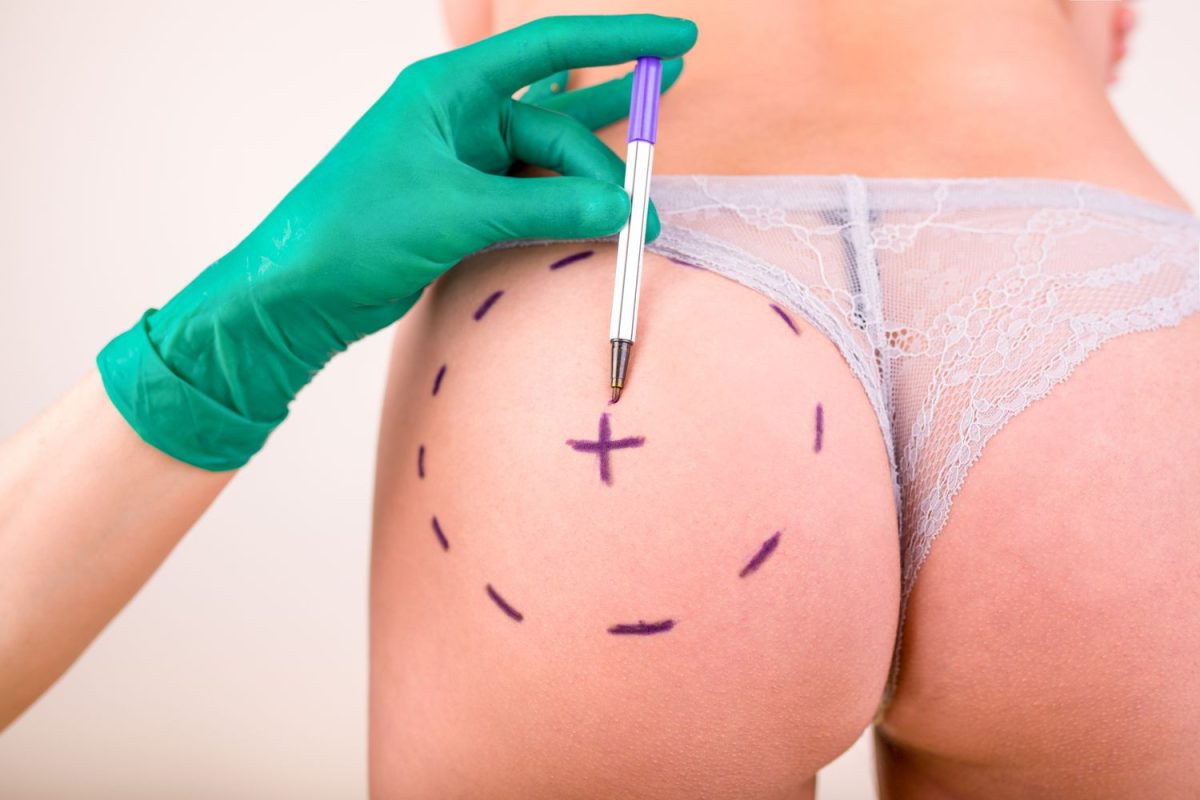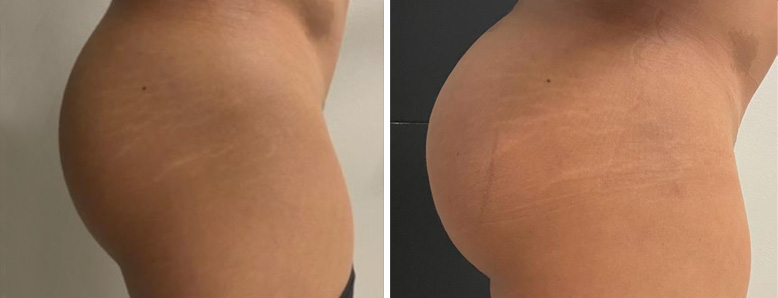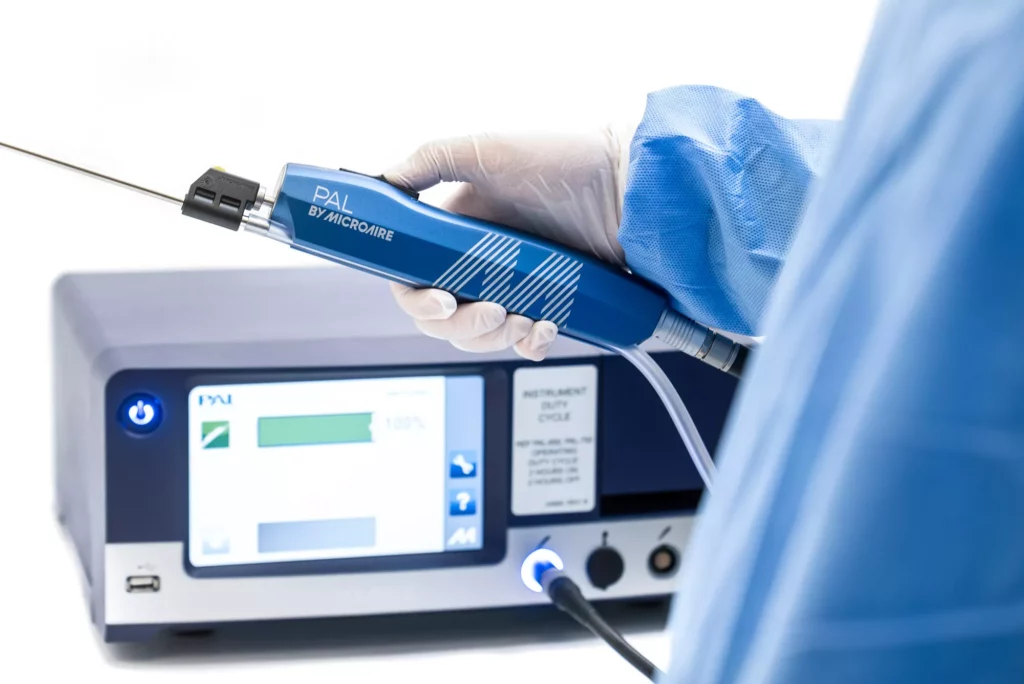Key Takeaways
-
Non-invasive skin tightening treatments offer effective anti-aging solutions without surgery, focusing on stimulating collagen production and improving skin texture with minimal recovery time.
-
These non-invasive, non-surgical treatments are just right for women over 35. These treatments range from radiofrequency, ultrasound, laser therapy, microneedling and microcurrent therapy, all with the aim of addressing skin laxity and aging issues.
-
Non-invasive skin tightening treatments have a lower risk and complication rate associated with them. Therefore, these alternatives are usually a better option for those seeking skin rejuvenation.
-
Achieving best results usually involves a series of treatments and varies per individual and their skin type and condition.
-
The ideal candidates for these non-invasive treatments are women over 35 exhibiting the initial stages of aging. They’re looking for subtle improvements and want a non-invasive option to surgery.
-
That’s why it’s important to consult with a trusted dermatologist. They’ll work with you to develop a customized treatment plan that meets your individualized skin requirements and ensures the safest methods.
Finding the best non-invasive skin tightening treatments for women over 35 is quite the journey. Get youthful, fresh-looking skin without going under the knife!
Both radiofrequency and ultrasound energy treatments heat the skin to induce new collagen production and help tighten the skin. When combined, these techniques offer powerful treatments for sagging and wrinkles.
Since laser therapies increase collagen and elastin production by heating the skin with light energy, they are less invasive and in high demand. Each treatment offers a different path toward improving skin elasticity, perfect for anyone looking to achieve noticeable results without the need for extensive recovery time.
With non-invasive options like these, it’s easier than ever to look and feel your best. We’ve got your back so you can age vibrantly.
What Are Non-Invasive Treatments
Non-invasive treatments are cosmetic procedures that are achieved without surgery or any major incision. In high-end cosmetic dermatology offices, these procedures largely aim at skin tightening and addressing signs of aging, such as the sagging of skin. They provide an effective and safer option to surgery for patients who do not want to undergo anesthesia or require extended recovery periods.
These treatments are aimed at improving skin quality. They do this by stimulating your natural collagen production—which is essential for maintaining your skin’s firmness and elasticity. They’ve taken off like wildfire among women over 35. These non-invasive solutions provide amazing anti-aging results with minimal downtime and no extensive healing time.
Definition of Non-Invasive Treatments
These non-invasive treatments such as CoolSculpting and EON are safe and highly effective at removing unwanted fat and treating skin laxity. Unlike surgical procedures, they can be performed in an outpatient clinic with little to no anesthesia required.
Restoration of youthful firmness, especially the non-surgical kind, is a major goal when it comes to treating skin sagging, as Dr. Devgan explains. In reality, many times it’s a mix of treatments – both invasive and non-invasive – working against deeper and more superficial tissues, thus providing better results.
Recovery is very short and discomfort, when it occurs, rarely rises above the mild range.
How They Differ From Surgical Options
In contrast to surgical alternatives, requiring incisions and lengthy recovery, non-invasive treatments come with less risk. Results may take a while, appearing gradually 2 to 6 months after the last treatment, and often require multiple sessions.
With these treatments, they do offer significant long-term benefits, with optimal results usually occurring at about six months.
Top Treatments for Skin Tightening
1. Radiofrequency Therapy
Radiofrequency therapy is a non-invasive treatment that uses energy to heat the deep, supportive layers of skin where collagen is produced. This technique offers impressive results in skin tightening and texture improvement.
Making this treatment ideal for use on the face and neck, it’s why so many of our women over 35 love it. It specifically targets those tricky, sag-prone areas.

2. Ultrasound Therapy
Ultrasound therapy uses ultrasound waves to deeply heat the tissue. This process lifts and tightens by stimulating new collagen production.
This treatment primarily focuses on tightening the sagging skin along the jawline and brow area. It provides a natural-looking and understated lift that refines your overall look.
3. Laser Treatments
Laser treatments use concentrated beams of light to promote the creation of collagen and elastin. Both treat skin laxity and surface imperfections such as wrinkles and pigmentation.
There are a variety of different types of lasers to choose from. This means we can customize treatment to different skin types, offering customizable, versatile solutions to your unique concerns.
4. Microneedling
Microneedling works by using small needles that create micro-injuries to the skin. This process stimulates the body’s collagen production.
It’s very effective in improving skin tone, reducing fine lines and wrinkles, and treating acne scarring. Typically used in conjunction with other treatments, microneedling boosts results for noticeably smoother skin.
5. Microcurrent Therapy
Microcurrent therapy is a non-invasive treatment that utilizes low-level electrical currents to re-educate and tone facial muscles. It increases skin elasticity and minimizes the appearance of fine lines.
This provides a non-invasive alternative with little to no discomfort involved. This technique is best for anyone looking for a non-invasive, low downtime procedure.
Bonus: Morpheus8
FDA-approved for all skin tones and types, Morpheus8 is a safe and effective treatment. It is effective at tightening skin laxity, minimizing fine lines, and rejuvenating skin tone and texture after massive weight loss or pregnancy.
The aesthetic treatment lifts and tightens sagging jowls along the jawline. It provides noticeably firmer, smoother skin after as few as three treatments.
Effectiveness of Treatments
These non-invasive skin tightening treatments can produce a smoother, more youthful appearance by improving skin firmness and texture over time. You’ll immediately notice improvements, including firmer, smoother and more youthful skin, often within just a few months.
Research shows these changes can increase to 35-40% by the end of treatment. Three months later, these gains can climb to a phenomenal 70%-75%, illustrating the delayed but worthwhile transformation. To achieve the best results, multiple treatments and ongoing maintenance are usually advised.
Consistency is crucial, as results will differ per individual depending on skin type and condition.
Expected Results and Longevity
As far as expected outcomes are concerned, women over the age of 35 can expect their skin to be smoother and firmer. Longevity is an unknown, with results lasting from a few months to two years at most.
Keeping to a regular skincare regimen is essential to continue seeing these outcomes. Non-invasive techniques can’t produce the same dramatic results ablative treatments achieve. Treatments such as RF have great promise in treating photoaging with less side effects.
Factors Influencing Effectiveness
There are many variables that determine how effective these treatments are. Overall, skin type and age are hugely important factors in treatment success.
Lifestyle factors, including a healthy diet and UV protection, increase benefits. Post-treatment care plays an important role, with adherence having a dramatic impact on the end results.
Ideal Candidates for These Treatments
Women 35 and up typically start to see the initial effects of aging, such as skin laxity and wrinkles. These non-invasive treatments provide an excellent alternative for patients seeking subtle improvement.
These minimally invasive procedures achieve surgical-like results without the risks or downtime of surgery, making them a viable option for almost everyone. Definitely consult with a dermatologist if you have any of the above skin conditions first before jumping in.
Skin Conditions and Concerns
From loosening sagging skin to diminishing the appearance of fine lines, these non-invasive treatments can work wonders on all your most common skin concerns. They can be tailored to address specific issues such as hyperpigmentation or acne scarring.
Knowing what skin type you have to start is important in determining the ideal treatment. Having a conversation with experienced professionals, like Dr. Rad, can go a long way toward figuring out your ideal approach.
Age and Health Considerations
As we age, skin loses elasticity, which affects the appropriateness of some treatments. In general, health and quality of skin are the most important factors in choosing which procedure.
Women who have pre-existing medical conditions may need to avoid certain treatments. Dr. Rad currently offers Morpheus8 treatment to help rejuvenate your body and face.
This cutting-edge treatment is your ticket to a tighter, smoother complexion. Results usually surface over 2-3 months as collagen regenerates, providing a fresh-faced appearance.
Importance of Consulting a Dermatologist
Consulting a qualified dermatologist is important for anybody interested in those non-invasive skin tightening treatments. These highly-trained specialists provide customized treatment recommendations to meet your specific skin needs.
The importance of a professional plan cannot be overstated. Dermatologists like Dr. Green and Dr. Ingleton encourage the importance of developing individualized plans. These plans consider your specific skin concerns and objectives. This means that each treatment is the most effective for the specific condition, but also the safest.
That’s why Dr. Ingleton is obsessed with how effective microneedling is at reducing sagging skin. In addition, Dr. Green says having a protective skincare routine post treatment is essential to keeping skin barrier intact.
Personalized Treatment Plans
Dermatologists are the best equipped to develop a personalized treatment plan by carefully evaluating your unique skin type and condition. This complete consultation creates a customized treatment plan, frequently involving a combination of treatments, such as microneedling and laser therapies, that can deliver the most dramatic results.
Dr. Frank and Dr. Green urge the importance of professional guidance when navigating skin treatments. This is especially important for those with deeper skin tones, who are more likely to experience hyperpigmentation.
Safety and Potential Risks
Non-invasive treatments have a much safer treatment profile than surgery, with side effects limited to temporary redness or swelling. Dr. Frank points out that FDA-approved devices reduce risks, protecting you during every procedure.
Keeping your diet full of vibrant vitamins and minerals, as suggested by Dr. Devgan, will help your skin flourish.
Additional Benefits of Non-Invasive Treatments
Non-invasive cosmetic procedures have more to them than you think. Their convenience, for one, is a primary benefit. Thanks to minimal downtime, you can easily incorporate treatments like CoolSculpting into your schedule.
In many instances, these procedures can be performed over a lunch period, enabling patients to comfortably resume their daily routine. This is particularly attractive for on-the-go women who desire noticeable results without major disruptions to their lifestyle.
Minimal Downtime and Recovery
The minimal downtime between treatments should be the primary advantage of non-invasive solutions. Unlike surgical procedures, these treatments are available with minimal or no downtime.
Non-invasive approaches such as radiofrequency can produce collagen, enhancing skin elasticity and firmness with lower risk of adverse effects. Clinical studies have demonstrated clinically significant improvements in skin laxity.
Final results leap from 35% to 40% at the conclusion of treatment to an amazing 70% to 75% after three months.
Cost-Effectiveness Compared to Surgery
In addition, non-invasive treatments are much more cost-effective than surgical treatments, which widens accessibility for more women. They’re often able to produce highly desirable outcomes without the cost burden associated with surgery.
While surgery requires a one-time investment, over time, non-invasive maintenance treatments provide ongoing savings. This impressive cost-effectiveness, coupled with the results looking more natural, makes non-invasive treatments a highly attractive option.
Conclusion
Learning about non-invasive skin tightening treatments is an investment that comes back with smooth, soft, youthful skin—no scalpels required. These treatments provide an accessible solution for women over 35, delivering natural-looking results and enhanced self-esteem. Techniques such as radiofrequency and ultrasound work miracles, zeroing in on problem areas with no downtime. Each treatment boasts distinct advantages and caters to varying needs, but consulting a dermatologist helps ensure the perfect fit. These procedures not only effectively tighten the skin, but they exfoliate and even out skin tone, making them attractive treatments. If so, it’s time to explore a non-invasive alternative that complements your lifestyle and aesthetic goals. Time to experience the transformation. Schedule a virtual consultation with one of our expert dermatologists now, and take the first step toward achieving firmer, smoother, more youthful-looking skin.
Frequently Asked Questions
What are non-invasive skin tightening treatments?
Non-invasive treatments, including effective laser skin options, are procedures that improve skin firmness without surgery. These cosmetic treatments employ various technologies such as lasers to stimulate collagen production, enhancing skin elasticity and firmness.
Which non-invasive treatments are most effective for women over 35?
Ultherapy, Thermage, and laser skin therapies are among the most popular and effective non-invasive skin tightening treatments. These cosmetic procedures penetrate into deeper layers of the skin, stimulating collagen production and improving overall skin appearance.
How effective are non-invasive skin tightening treatments?
Effectiveness varies from person to person, especially with cosmetic treatments like laser skin tightening. Patients often notice significant changes in skin firmness and texture within just a few months after treatment, and with the right skin care regimen, results can last a year or longer.
Who is an ideal candidate for non-invasive skin tightening treatments?
Candidates with mild to moderate skin laxity, particularly women over 35, are ideal for effective laser skin tightening treatments, which smooth out the visible effects of aging without the downtime associated with surgical methods.
Why is consulting a dermatologist important before treatment?
Working with a cosmetic skin clinic and a dermatologist will help ensure that skin treatments are safe and appropriate. By evaluating your current skin condition, dermatologists can prescribe the most effective treatment options while minimizing risks and side effects.
Are there any additional benefits of non-invasive treatments?
These beneficial skin treatments are not limited to skin tightening effects; they also involve effective laser skin resurfacing to reduce fine lines and improve overall skin tone, often with little pain or downtime.
How long do results from non-invasive treatments last?
Results from cosmetic treatments do vary but generally last 6 to 12 months. With regular maintenance sessions and an effective skincare routine, including beneficial skin treatment options, the results can last longer.





















